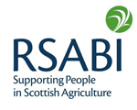Rising feed costs have brought about renewed interest in forage crops. They have the potential to produce very high yields over a short growing period, combined with a flexible sowing window from early summer to the beginning of August. We have selected from the plant breeders forage crop varieties which will give our customers a flexible range for almost every farm situation.

Roots and forage crops can be fed to all classes of livestock, either for milk production or live weight gain and are suitable for organic and conventional farming. These crops demand relatively modest input of agrichemicals and fertiliser and with their high dry matter yield, production costs compare favourably with those of conserved grass, maize and whole-crop cereals.
Decision making on which forage crop to grow really comes down to when it can be sown and when it is needed to be utilised. Full season crops such as kale and swedes have good winter hardiness but are required to be sown in the Spring while less winter hardy catch crops, such as stubble turnips and rape can be sown later in the season and can be utilised in around twelve weeks. Soils should be tested before sowing with a target pH of above 6 and adequate levels of phosphate and potash. The field can be ploughed or direct drilled if there isn’t a thatch of old grass. Most of the fertiliser should be applied into the seedbed with extra nitrogen applied later in the season if required. Crops should be monitored for any sign of pest damage. Common pests to keep an eye on would be slugs, flea beetle and diamond back moth. Care must be taken to correctly identify the pest and apply an appropriate spray if needed. Flea beetle will leave pin pricks on leaves, slugs will shred the edges of leaves and caterpillars would be present on the underside of leaves.

All forage crops should be introduced gradually over a two-to-three-week period. Ideally there should be an area of grassland to allow stock to run back on to or have access to grass silage. Brassicas are generally low in dry matter at around 12-15% so fibre needs to be available to provide a scratch factor and promote rumen function. Access to hay or straw and water is essential and inclusion rates of forage crops should be between 35-50% of total dry matter intake. If possible, bales should be put out on to the fields ahead of grazing to avoid damage during the winter period. Long, narrow breaks are best to enable stock to access the crop at the same time and prevent localised poaching with the fence moved daily. Start grazing at the top of the hill and work your way down to reduce run-off and environmental risk.
Brassicas tend to be high in glucosinolates which can negatively affect iodine and vitamin E uptake. They are also low in copper, iodine, phosphorus and magnesium so it’s important to provide these materials. Blousing each animal is advisable to ensure they get the right dose. Alternatively, a mineral bag can also be cut open over the top of a silage or straw bale to provide minerals with every bite.




